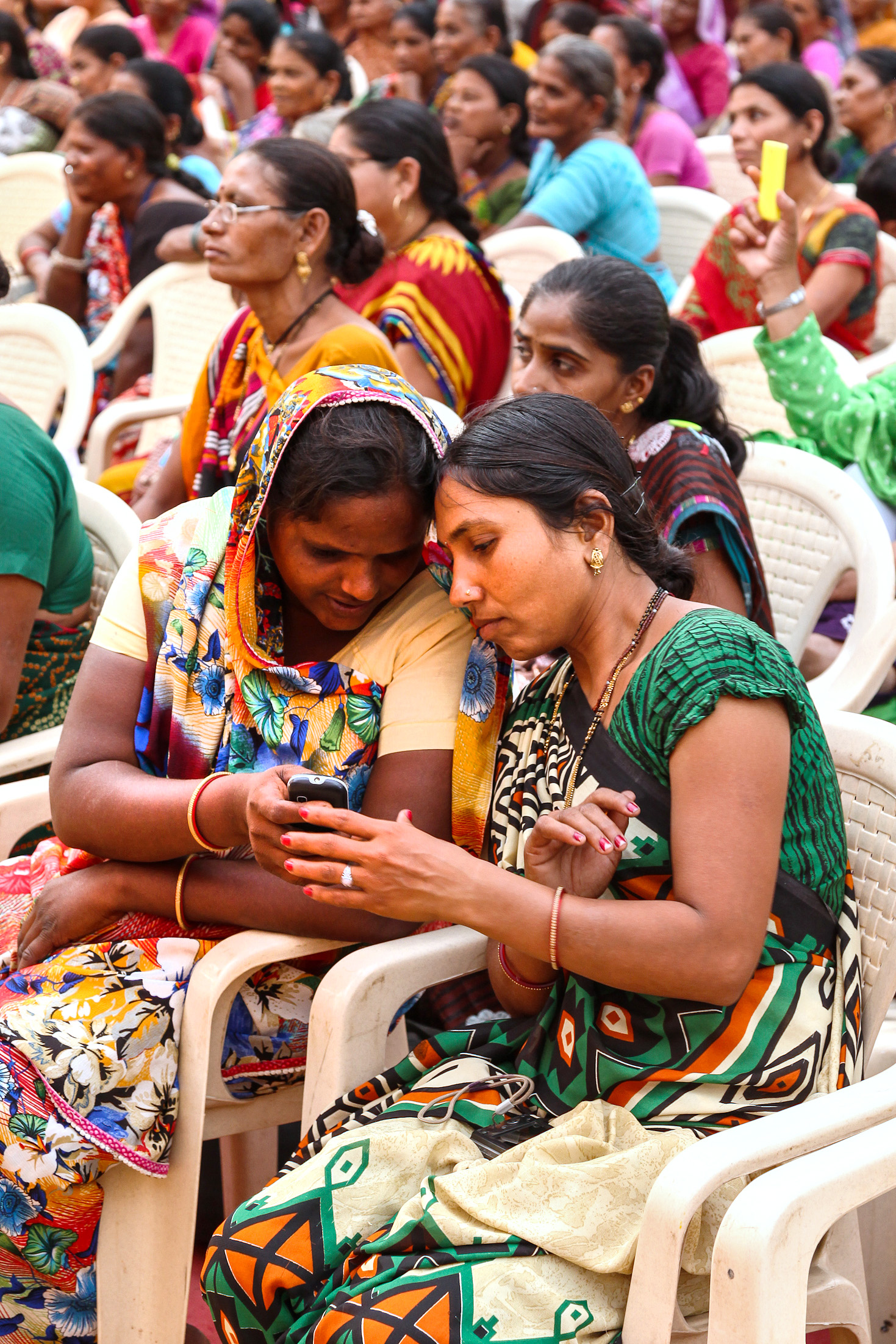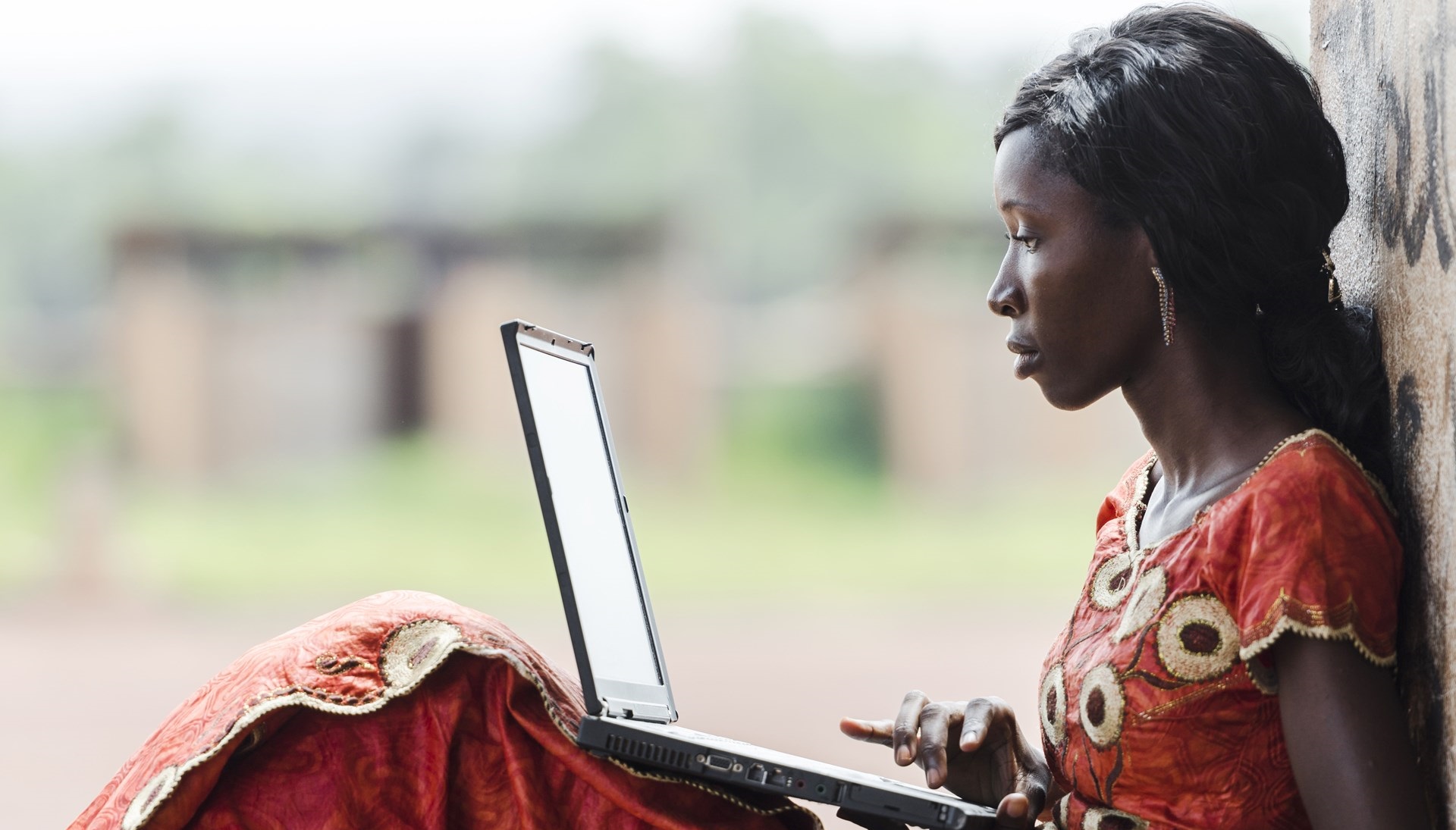


International

Women’s Day 2023:
IFPRI researchers on
gender and technology

International Women’s Day 2023 (March 8), under the theme “DigitALL: Innovation and technology for gender equality,” recognizes and celebrates the women and girls who are championing the advancement of transformative technology and digital education. To mark IWD and explore this important theme, we asked colleagues across IFPRI to share examples of innovation and technology they’ve seen work for improving gender equality and strengthening gender research capacity, and what research tells us about the rapidly changing landscape of gender and technology in food systems.



Melissa Hidrobo
Senior Research Fellow, Poverty, Health, and Nutrition Division
Edutainment can help address some of the underlying attitudes behind gender-based violence (GBV) by engaging individuals in a storyline with educational and social issues integrated into the narrative. Edutainment through television or film may be a particularly effective strategy in targeting adolescents and young adults with relatively high levels of media exposure and who may often consider television a “super peer” that defines their norms and influences their behavior. We conducted a mixed method evaluation of a popular edutainment TV series in West Africa, C’est la vie!, which revolves around everyday life in a health clinic and is specifically meant to engage young women on issues including child marriage, teen pregnancy, intimate partner violence, and female genital cutting. Our process evaluation showed that women and girls in rural areas of Senegal universally loved the show, shared information and storylines with family and friends, and reported becoming aware of and learning about the series themes, which they viewed as important and applicable to their own lives. Moreover, we found that the series was successful at changing women and girl’s short-term knowledge and awareness around GBV as well as attitudes and norms in the medium-term, but that these were not accompanied by reductions in GBV. Further testing, refining, and expanding of edutainment and media in rural areas has the potential to both captivate and entertain, as well as shift harmful gender unequal attitudes and norms.

One way technology can promote women’s empowerment is through edutainment, (education+entertainment) delivered through mass media platforms including television and radio. How can edutainment help challenge attitudes and norms around gender-based violence?
Q:



Berber Kramer
Senior Research Fellow, Markets, Trade, and Institutions Division

In many rural smallholder households, women face a real threat of domestic violence. Research in Kenya found this to be a major driver of women’s disempowerment, increasing gender gaps in agriculture. When there is a real concern that speaking up, or making the wrong decision, could lead to violence, women will be discouraged from actively sharing knowledge acquired through their social networks and contributing to agricultural decisions.
To test whether edutainment can help address these challenges, we collaborated with Mediae, producers of the popular reality TV farming make-over show Shamba Shape-Up, to make an episode using insights from our research. We screened the episode, which highlighted positive gender equality messages, to farmers in randomly selected villages and found that this form of edutainment helped reduce gender biases and increased joint decision making. Although we found no effects on attitudes toward domestic violence, the episode sparked a dialogue around gender norms and repercussions of domestic violence.
The episode was later screened on Kenya’s Citizen TV, reaching millions of smallholder farmers.
A persistent lack of women’s empowerment in rural farming households, where men hold much of the decision-making power, is an especially difficult problem. How can edutainment help change the societal norms that reinforce this gender gap in agriculture?
Q:


Elizabeth Bryan
Senior Scientist, Environment
and Production Technology Division
Gender inequalities in food systems influence how the benefits of new agricultural technologies, like those for small-scale irrigation, are distributed. Women’s lack of agency and access to resources compared to men, along with other constraints, often limit their ability to adopt and directly benefit from agricultural technologies. New research on the impacts of an intervention that distributed motor pumps to men and women in Northern Ghana for small-scale irrigation found that women’s empowerment did not increase as a result of the intervention, despite the fact that many women were involved in irrigation activities and were in groups that received the pumps. Women had less access to irrigable land and men were considered owners of the pumps, which limited the direct benefits to women. In addition, the intervention may have had negative impacts on the empowerment of women in households in intervention communities that did not receive the pumps, by exacerbating competition over the technologies and water resources.
However, some women did benefit indirectly from the pump distribution. The intervention increased overall household assets owned, helped women reallocate their labor to more preferred livelihood activities, and source irrigated produce from their own farms. Thus, the expansion of small-scale irrigation technologies requires careful planning and implementation to effectively support women’s empowerment and avoid potential negative impacts. Approaches that pair the distribution of irrigation technologies with complementary investments in water supply infrastructure as well as activities aimed at increasing women’s access to resources are needed to ensure that women can reap the benefits.
New agricultural technologies can have broad economic and social benefits — which may not be equally distributed. How do we make sure technology does not inadvertently decrease women's empowerment?
Q:






Ara Go
Senior Program Manager, Poverty, Health, and Nutrition Division
The WEAI team at IFPRI provides learning opportunities for gender researchers in food and nutrition security by offering distance learning courses on the project-level Women’s Empowerment for Agriculture Index (pro-WEAI). Our goal is to strengthen researchers’ capacity and better equip them to measure and monitor how agricultural development projects are doing at helping women reach higher levels of empowerment. WEAI (all versions) has now been used by 246 organizations in 58 countries worldwide. Given this wide and rapid uptake of the instrument, we also needed to preserve the integrity of the index and to ensure its appropriate application in the field. The pro-WEAI course consists of five modules and provides conceptual frameworks, tools and resources, and approaches to integrating the tools into different agricultural development projects.
The first module on pro-WEAI foundations (launched in 2021) is self-paced.
Other modules on survey fieldwork, qualitative analysis (launched in
2022), index caculation, and analyzing and reporting results
(coming in 2023) include online discussion sessions led by
experienced instructors.
Development projects are often carried out without adequately considering potential gender-related impacts. How can we use distance learning platforms to build capacity for gender research?
Q:





Muzna Alvi
Research Fellow, Environment and Production Technology Division, South Asia Region
Phone surveys were extremely valuable in doing quick assessments of how people were coping with the income and health shocks following COVID-19 lockdowns, and in allowing researchers and policymakers to track recovery over time. However, we found that reaching women and other marginalized groups through phone surveys is challenging, as access to mobile phones continues to remain highly unequal, even in countries like India where mobile penetration is high. Also, researchers have to be sensitive in how we ask questions, and which questions to ask, because we cannot ensure that the respondent is answering the phone survey in private. Answering or being asked to answer sensitive questions can often jeopardize women respondents if others are overhearing the conversation. We found that the use of speakerphone was as high as 65% in our sample, among both women and men, which necessitates rethinking the content and framing of our questions.
Phone surveys are a crucial research tool that provide insights into many topics, but sometimes women face particular obstacles in responding. What are some key "lessons learned" regarding gender sensitivities from conducting research via phone survey?
Q:




View Melissa's Profile
View Berber's Profile
View elizabeth's Profile
View Ara's Profile
View Muzna's Profile










Back to Top

Photo: UN Women / Gaganjit Singh
Photo: Hamish John Appleby / IWMI
Photo: Claividus / Flickr
Phone surveys were extremely valuable in doing quick assessments of how people were coping with the income and health shocks following COVID-19 lockdowns, and in allowing researchers and policymakers to track recovery over time. However, we found that reaching women and other marginalized groups through phone surveys is challenging, as access to mobile phones continues to remain highly unequal, even in countries like India where mobile penetration is high. Also, researchers have to be sensitive in how we ask questions, and which questions to ask, because we cannot ensure that the respondent is answering the phone survey in private. Answering or being asked to answer sensitive questions can often jeopardize women respondents if others are overhearing the conversation. We found that the use of speakerphone was as high as 65% in our sample, among both women and men, which necessitates rethinking the content and framing of our questions.